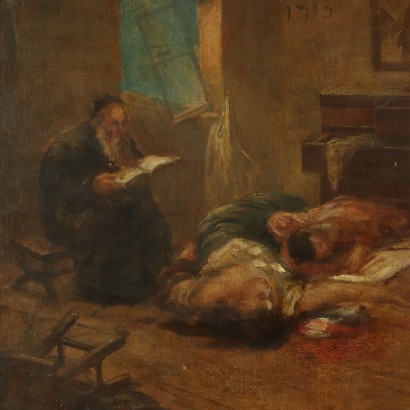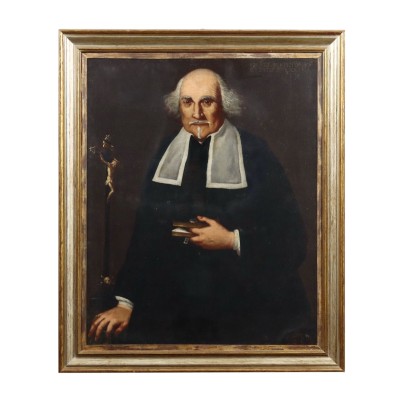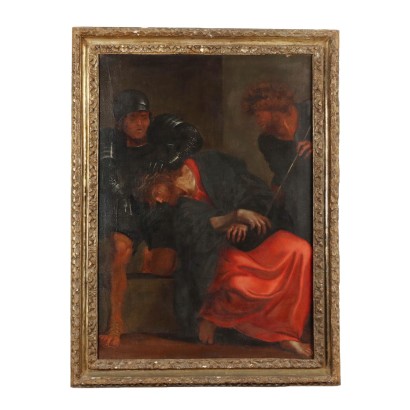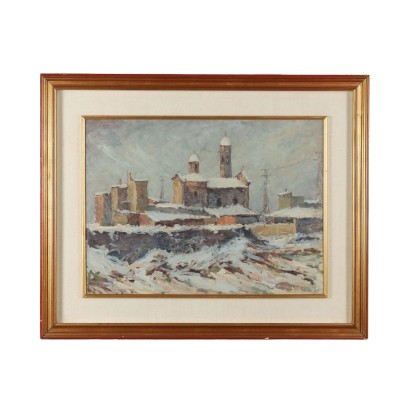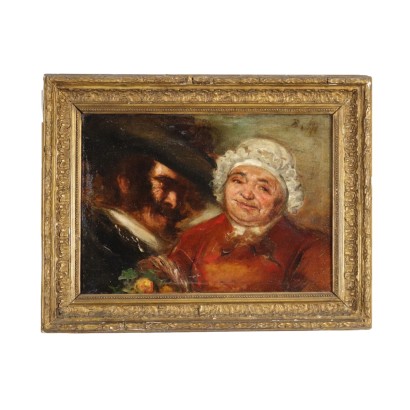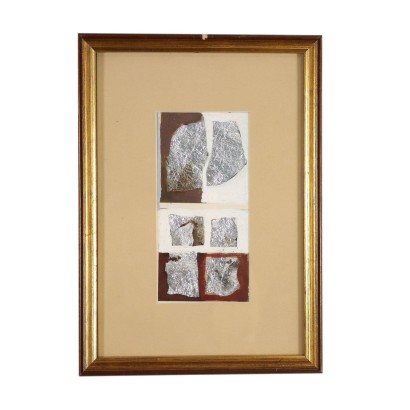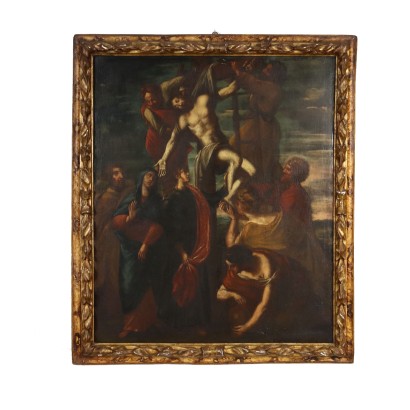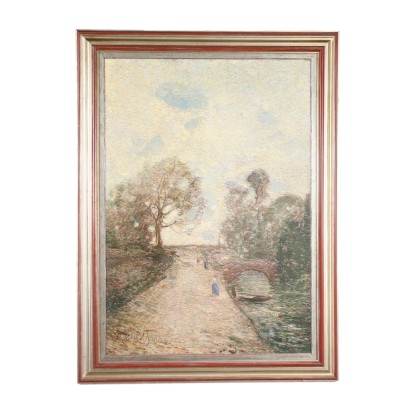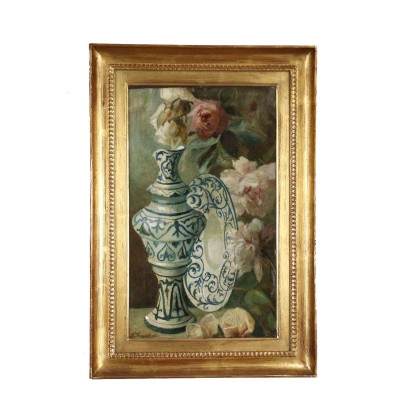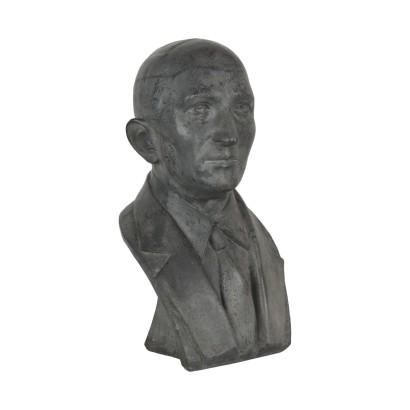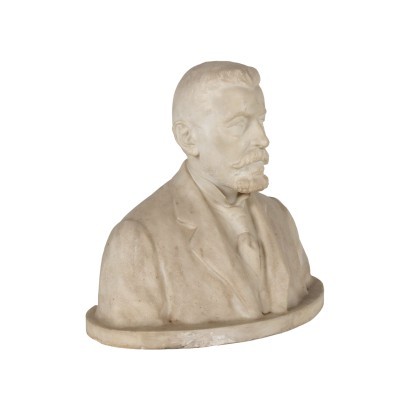ARARNO0141429
L. Scrosati Oil on Canvas Italy 1860
Vase, Roman excavations, 1860
Oil painting on canvas. Signed and dated lower left. Further signature, date and title on the back. On the frame there is a stamp from an important private collection. The work proposes a composition of an amphora and a painted ceramic plate, surrounded on the right by roses. Milanese painter and decorator, Luigi Scrosati initially attended the Brera Academy, which he soon abandoned to devote himself to numerous trips abroad, in particular to Paris. Already from the beginning of his activity, in the 40s, he worked as a painter of still lifes strongly influenced by French examples, in particular from the Lyon school. Alongside the easel and watercolor production, dominated by the specialization of still life of flowers, Scrosati was very active as an interior decorator, often engaged in team work alongside architects and project managers, but always with considerable autonomy and a characteristic style , substantially eclectic and aimed at a reinterpretation of the styles of the past. The debut in this area, towards the end of 1842, consists of a cycle of frescoes in the residence of San Fiorano (LO) owned by Giorgio Guido Pallavicino Trivulzio, for which Scrosati decorated a Gothic room, a Rococo living room and a small entrance compartment. His frescoes can be found in numerous villas in and around Milan, works in which Scrosati refers to the styles of the past, re-proposing eighteenth-century suggestions, but also of the Baroque. The decorations in the Dante's Cabinet first and then in other rooms in the Palazzo Poldi Pezzoli in Milan (now home to the Museum of the same name) were instead of neo-medieval taste, made with the Bertini team of which Scorsati was part. The disease that struck Scrosati in the lower limbs in 1857, making him ill, probably prevented him from continuing his activity as a decorator, forcing him to fall back on floral easel painting, which led him to produce still lifes of flowers, but also portraits or fake bas-reliefs with garlands of flowers or even interiors and genre scenes, in which he was influenced by the German and Viennese production of the Biedermeier type and the French one of the Lyon school. In 1862 Scrosati was commissioned to direct a new Ornato course at the Brera Academy, with particular reference to flower painting and relations with industry, a course set up by the Braidense institution to expand the already flourishing school of ornamental painting. The work is presented in a style frame.


